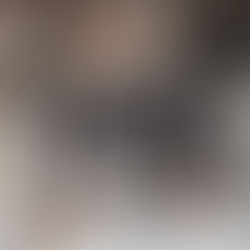Poop, anyone?
Not so long ago, I was out on a guided walk inside the Kruger National Park with good friend, and phenomenal guide, Chantelle Venter, when I noticed a largish white patch on the ground.

I presumed it to be bird scat of sorts, such as from a water bird, but feeling that it might be a bit out of place, I pointed it out to Chantelle, who casually said, “Ya, scrub hare shit”.
“Not bird?” I asked.
“Nope, scrub hare. That’s the soft faeces they produce, which they then eat so it goes for a second round of digestion, and when that comes out again it’ll be in the form of hard pellets, like these ones,” and she bent down to scooped up a few straw coloured, round beads about the size of my fingernail. “It’s called coprophagy.”
“Doesn’t sound like an appetising idea at all? Why would they do that?” I asked.
“To better digest the plant matter they eat in order to get more nutrients out of it.”
It may not sound like a great idea, but man it’s clever (in a purely nature context of course). This required more looking into and here’s some of what I discovered.
Coprophagia is a term which refers to the consumption of faeces; eating one's own poop, or that of others.
The word is derived from the Greek word koprophagos, which consists of two parts: kopros - “dung or faeces”, and phagos – “eater of”, which is a derivative of phagein – “to eat”.
The young of elephants, giant pandas, koalas and hippos eat the faeces of their mothers, or other animals in the herd, in order to obtain the bacteria required to properly digest vegetation found in their ecosystems. When these animals are born, their intestines are sterile, and as

such do not contain these bacteria. Without doing this, they would be unable to obtain any nutritional value from the plants they eat.
And in line with my introduction to this strange behaviour, species within the Order Lagomorpha (rabbits, hares, and pikas) produce two types of faecal pellets; hard ones and soft ones called cecotropes. Animals of these species re-ingest their cecotropes, to extract further nutrients. Cecotropes derive from chewed plant material that collects in the cecum, a chamber between the large and small intestine, containing large quantities of symbiotic bacteria that help with the digestion of cellulose, and also produce certain B vitamins. After excretion of the soft cecotropes, it is again eaten whole by the animal and re-digested in a special part of the stomach, where it can remain for up to six hours. The bacteria within continue to digest the plant carbohydrates. This double-digestion process enables these animals to use nutrients that they may have missed during the first passage through the gut, as well as the nutrients formed by the microbial activity, and thus ensures that maximum nutrients are derived from the food they eat. This process serves the same purpose within these animals as rumination (cud-chewing) does in cattle and sheep.
It’s simply fascinating, and once again I am blown away by how clever nature is. The more one delves into the natural world the more one is humbled by the marvel of it.

As fascinating as it is however, it’s probably a good thing Beatrix Potter neglected to find a way to weave this fact into her “Tales of Peter Rabbit”. I imagine had she done so, fewer of those much sought after Peter-Rabbit-kiddies’ cereal bowls would be out there gracing collections today.
Not to mention the serious malnutrition that may have occurred amongst my generation growing up, due to parents’ failed attempts at convincing us, that what was heading our way, piled upon a Peter Rabbit spoon, having originated from a bowl with the very same name and accompanied by all sorts of ooh’s, aah’s and open wide’s, had absolutely nothing to do with pre-digested poo!













